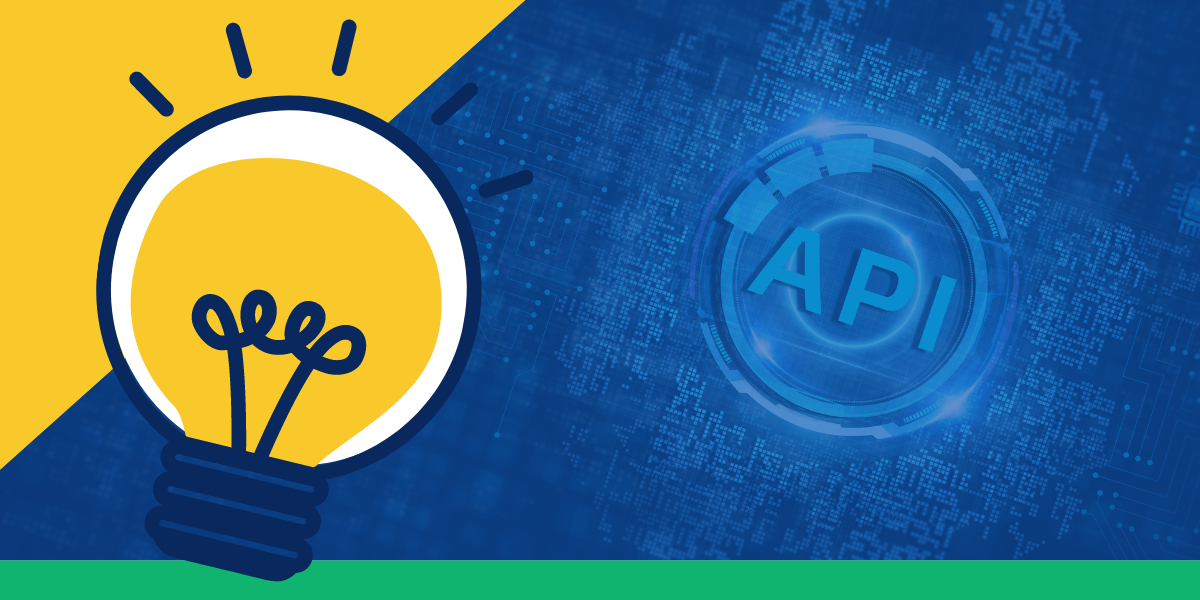3 min read
Tech Jargon Explained: Understanding APIs—The Digital Language of Communication
 Rachael Skillman
:
Feb 7, 2024 7:00:00 AM
Rachael Skillman
:
Feb 7, 2024 7:00:00 AM

Welcome to our first “Tech Jargon Explained” blog! In this series, we'll be unraveling the complexities of tech terms and concepts, starting with APIs, to help you navigate the digital world with ease and clarity.
Today, we’re diving into a concept that sounds complex but is actually a fundamental part of our digital lives—the API. Let's demystify the API in a way that's as straightforward as chatting over a cell phone.
What is an API?
API stands for Application Programming Interface. A mouthful, right? But let's break it down. Imagine you’re in a restaurant with a menu of choices to order from. The kitchen is the part of the system that will prepare your order. What’s missing is the critical link to communicate your order to the kitchen and deliver your food back to your table. That’s where the waiter, or in our case, an API, comes in. The API is the messenger that takes your request, tells the system (the kitchen) what to do, and then brings the response back to you (the diner).

APIs: The Tech World’s Cell Phones
Simply put, an API is a way for technologies to communicate with each other. Much like how cell phones allow us to talk to people worldwide, APIs enable different software applications to interact and exchange data, regardless of how they were originally designed. They’re behind the seamless experiences we expect in the digital world.
Why Are APIs Important?
APIs play a pivotal role that goes beyond simple data exchange. Let’s peel back the layers to see why APIs are so crucial, transforming everything from how we shop online to how our apps talk to each other, making our digital world run a little smoother and a lot smarter.
- Integration and Connectivity: APIs are crucial in connecting different systems and applications. They allow features from one product or service to be used within another. For example, when you use a social media site to log into a shopping app, an API works behind the scenes.
- Efficiency and Innovation: By enabling different applications to communicate, APIs save time and resources. Developers don't need to start from scratch every time they want to create a new program. They can leverage existing APIs to build upon and innovate.
- Personalization: APIs allow for more personalized experiences. When you receive book recommendations from an online store, an API is analyzing your buying habits and preferences.
- Automation: APIs streamline processes by allowing applications to handle repetitive tasks automatically. Think of a weather app on your phone that automatically updates its data throughout the day.
How Do APIs Work?
Let’s use a practical example. You’re using a travel booking app to reserve a flight. When you enter your travel details, the app communicates with various airline systems via their APIs. It sends a request with your flight preferences, receives the available options, and displays them to you. This interaction happens through a set of defined operations, rules, and protocols that the API specifies, ensuring smooth communication between your app and the airline systems.
APIs are everywhere. When you check the weather, book a hotel, pay online, or even like a social media post, APIs work tirelessly in the background. They're the reason you can see your bank balance on your phone and share your fitness achievements from a health app to your social networks.
Types of APIs
As we’ve seen, APIs are fundamental to the digital world, but not all APIs are created equal. They come in different flavors, each serving unique purposes and audiences. Let’s dive into the types of APIs.
- Public APIs: These are built for anyone to interact with and use. They allow developers to integrate their apps with other services.
- Internal APIs: These APIs are only used within your company and for a very specific functionality. This is how most web APIs function today, helping improve internal products and services.
- Partner APIs: Partner APIs exist because companies want to expand their product functionality but don’t want to make it public for one of several reasons. These reasons include not wanting to expose themselves to potential security flaws or ensuring only high-quality companies use their API and maintain certain standards for usability, security, scalability, etc. Companies make Partner APIs available only to partners who sign a contract.
APIs—The Unsung Digital Hero
Understanding APIs is key to appreciating how digital experiences are created and interconnected. They are like a universal language that allows different technologies to understand and work with each other, enhancing our interaction with the digital world. Next time you use your favorite app or website, remember the role of APIs–they're the unsung digital communicators making it all happen.
Stay tuned for our next blog in the “Tech Jargon Explained” series, where we’ll continue to turn complex tech concepts into everyday understanding. Whether you’re a tech guru or just curious about the digital world, there’s always something new to learn!


